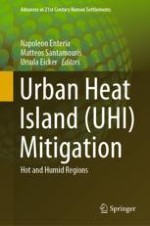2021 | OriginalPaper | Chapter
Urban Heat Island, Contributing Factors, Public Responses and Mitigation Approaches in the Tropical Context of Malaysia
Authors : Nasrin Aghamohammadi, Logaraj Ramakreshnan, Chng Saun Fong, Nik Meriam Sulaiman
Published in: Urban Heat Island (UHI) Mitigation
Publisher: Springer Singapore
Activate our intelligent search to find suitable subject content or patents.
Select sections of text to find matching patents with Artificial Intelligence. powered by
Select sections of text to find additional relevant content using AI-assisted search. powered by
